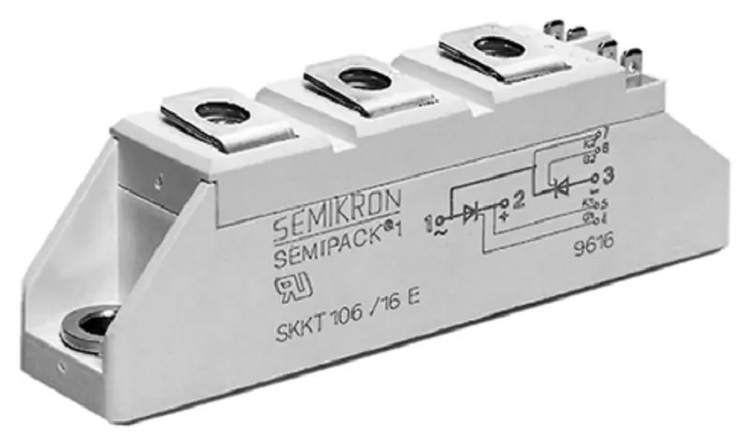The thyristor diode module is an essential component in the world of electronic devices and power systems. It plays a crucial role in controlling electrical power and has numerous applications. Often referred to as thyristors, these semiconductor devices come in different types and have a wide range of uses. we will explain the basics of thyristor diode modules in simple terms and explore their different types and applications.
Table of Contents
Understanding Thyristor Diode Modules
A thyristor is a crucial semiconductor device that belongs to the family of rectifiers. It is designee to convert alternating current (AC) into direct current (DC) by allowing the flow of electric current in one direction. The thyristor diode module is an advanced version that combines multiple thyristors in a single package, providing superior performance and versatility.
Breakdown of the components within a thyristor diode module
Different types of thyristors exist, each with its own applications and unique characteristics:
- Silicon Controlled Rectifiers (SCRs): These are the most widely use thyristors. They can control the flow of electrical current by using a small voltage at the gate terminal. SCRs are suitable for power control applications, motor drives, lighting systems, temperature control.
- Triacs: Triacs are thyristors design for AC applications. They can control the current in both directions, making them suitable for applications where the current changes direction periodically. Dimmer switches and motor speed controls are common applications for Triacs.
- Gate Turn-Off Thyristors (GTOs): GTOs are an advance version of SCRs, with an additional feature – the ability to turn off the thyristor using a negative voltage at the gate. This makes GTOs suitable for applications where rapid switching and control are essential, in high-frequency inverters and induction heating systems.
- MOS-Controlled Thyristors (MCTs): MCTs combine the principles of thyristors with Metal-Oxide-Semiconductor Field-Effect Transistors (MOSFETs). They offer improved switching characteristics and are used in high-power applications like electric vehicles, renewable energy systems, and high-voltage direct current (HVDC) transmission.
What is the usage of Thyristor Diode Modules
Thyristor diode modules have a wide range of applications in various fields. In power electronics, they are use to control electrical power efficiently. This includes variable-speed drives for motors, uninterruptible power supplies (UPS), and voltage regulators.
In lighting systems, traces are commonly use in dimmer switches, providing control over light intensity making them ideal for creating ambient and energy-efficient lighting environments.
SCRs find applications in temperature control systems, usually regulating the power supplied to heating elements. This is common in appliances like ovens, electric stoves, industrial heating systems.
Thyristor diode modules significant components in renewable energy systems, mainly controlling, converting power from solar panels and wind turbines. Their ability to handle high voltages and currents makes them essential in power inverters.
GTOs and MCTs are critical in high-voltage direct current transmission systems, connecting power grids and enabling efficient energy transfer for long-distance power transmission with minimal losses.
The right type of thyristor diode module
Selecting the right thyristor diode module involves taking into account several factors voltage and current ratings, switching frequency, cooling requirements, packaging and mounting.
- It is important to ensure that the module can handle the peak voltages and currents that are expected to be generated in your application.
- You should choose a module with an appropriate switching speed that matches your desired control accuracy.
- The module’s heat dissipation requirements must be matched to the available cooling system.
- You should opt for a module design and mounting configuration that fits your space and equipment layout.
To choose the appropriate thyristor diode module for your specific power control requirements, it’s essential to have knowledge about the components, configurations, selection criteria of these modules. If you have any questions about the different types of thyristors, the selection process for modules, feel free to ask.

